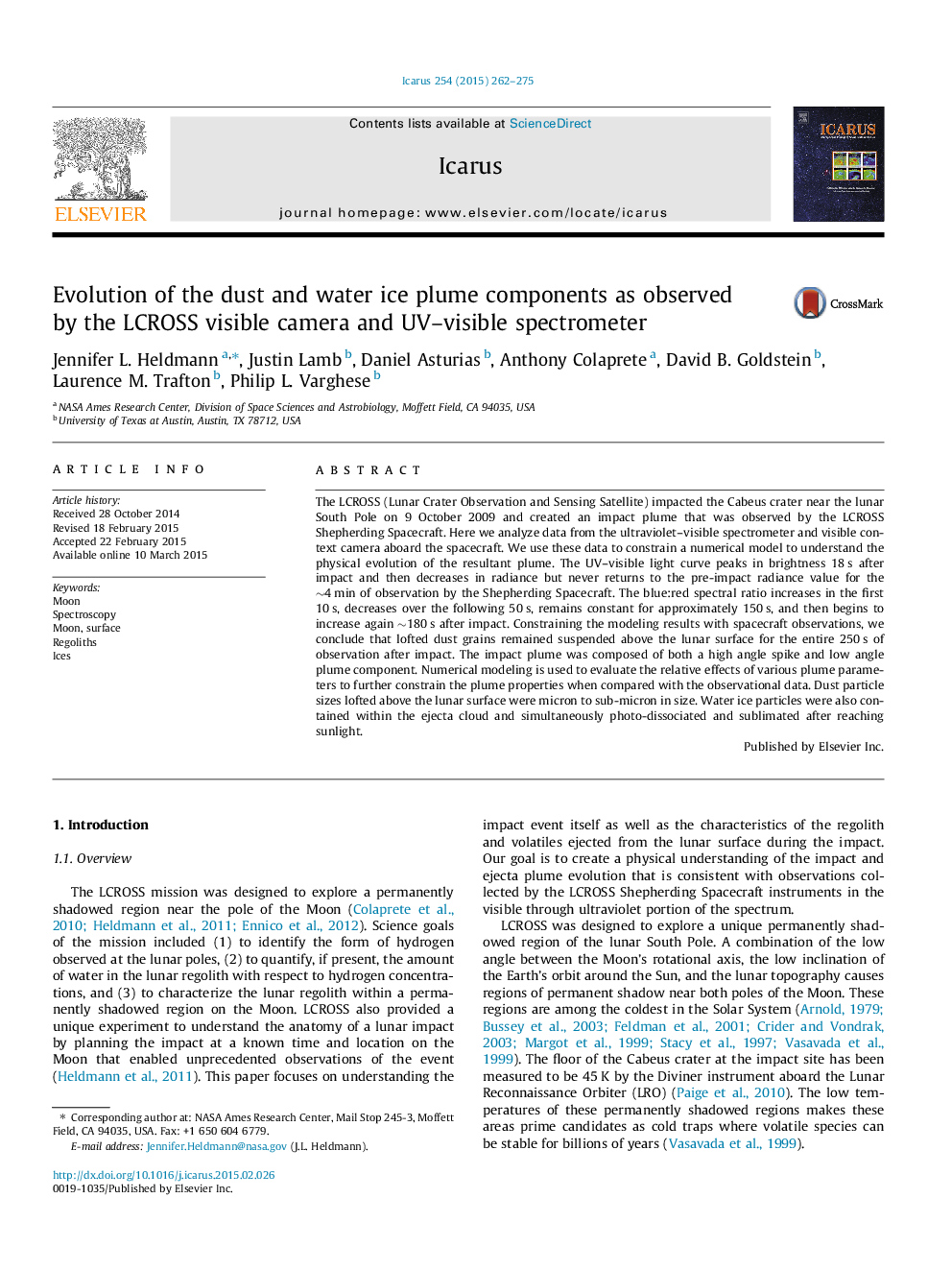| Article ID | Journal | Published Year | Pages | File Type |
|---|---|---|---|---|
| 8136328 | Icarus | 2015 | 14 Pages |
Abstract
The LCROSS (Lunar Crater Observation and Sensing Satellite) impacted the Cabeus crater near the lunar South Pole on 9 October 2009 and created an impact plume that was observed by the LCROSS Shepherding Spacecraft. Here we analyze data from the ultraviolet-visible spectrometer and visible context camera aboard the spacecraft. We use these data to constrain a numerical model to understand the physical evolution of the resultant plume. The UV-visible light curve peaks in brightness 18Â s after impact and then decreases in radiance but never returns to the pre-impact radiance value for the â¼4Â min of observation by the Shepherding Spacecraft. The blue:red spectral ratio increases in the first 10Â s, decreases over the following 50Â s, remains constant for approximately 150Â s, and then begins to increase again â¼180Â s after impact. Constraining the modeling results with spacecraft observations, we conclude that lofted dust grains remained suspended above the lunar surface for the entire 250Â s of observation after impact. The impact plume was composed of both a high angle spike and low angle plume component. Numerical modeling is used to evaluate the relative effects of various plume parameters to further constrain the plume properties when compared with the observational data. Dust particle sizes lofted above the lunar surface were micron to sub-micron in size. Water ice particles were also contained within the ejecta cloud and simultaneously photo-dissociated and sublimated after reaching sunlight.
Related Topics
Physical Sciences and Engineering
Earth and Planetary Sciences
Space and Planetary Science
Authors
Jennifer L. Heldmann, Justin Lamb, Daniel Asturias, Anthony Colaprete, David B. Goldstein, Laurence M. Trafton, Philip L. Varghese,
